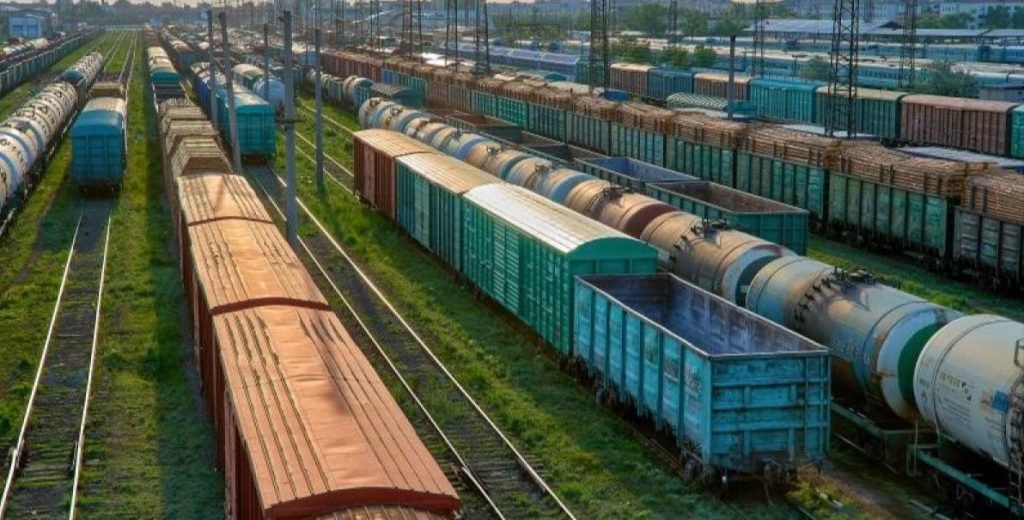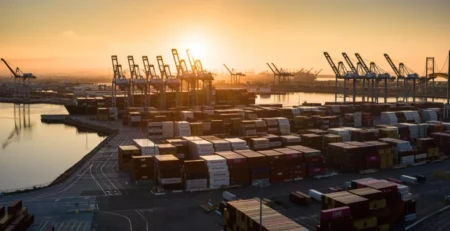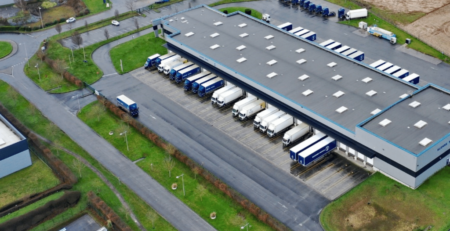Kazakhstan Revolutionizes Fashion Logistics with Rail-Based Supply Chain Breakthrough

By Eva Richardson | The Logistic News
April 8, 2025
Kazakhstan’s fashion industry is stepping onto a faster, greener, and more connected runway thanks to a new railway logistics model designed to streamline supply chains and reduce dependency on long-haul trucking. The initiative—announced by Kazakhstan Temir Zholy (KTZ), the national railway company—is set to drastically cut transit times, optimize costs, and boost the resilience of the country’s burgeoning apparel market.
The new model, launched in collaboration with key industry stakeholders and retail brands, aims to enhance cross-border logistics efficiency by integrating multimodal transport solutions and leveraging Kazakhstan’s strategic location on the Eurasian trade corridor.
Rail Takes the Lead in Fashion Freight
The model marks a decisive shift away from traditional road freight for fashion logistics, replacing it with dedicated block trains capable of transporting bulk clothing and textile shipments from production hubs in China and Southeast Asia directly to major retail hubs in Almaty, Astana, and Shymkent.
“This new railway system represents a fundamental upgrade in our national supply chain infrastructure,” said a senior executive at KTZ. “For the fashion sector, speed and flexibility are key—and rail gives us both, with the added benefit of sustainability.”
Time and Cost Savings for Retailers
According to KTZ, the rail-based logistics network will reduce transit times from up to 30 days by road to just 12–15 days by rail. This acceleration is expected to significantly improve inventory turnover rates, reduce storage costs, and allow fashion retailers to respond more dynamically to consumer trends.
With the support of customs authorities, clearance processes at border checkpoints have also been optimized, ensuring shipments face minimal delays in transit.
Eco-Friendly Fashion Supply Chains
Sustainability is another core component of the new model. Rail transport emits up to 80% less carbon per ton-kilometer than road transport, aligning with Kazakhstan’s broader goals to reduce its logistics sector’s carbon footprint by 15% by 2030.
Major Kazakh fashion distributors and retailers have already begun integrating the railway model into their inbound logistics, citing environmental compliance and brand responsibility as motivating factors.
Digital Monitoring and Integration
KTZ has also integrated real-time shipment tracking and predictive arrival forecasting into the system, allowing fashion retailers to plan promotions and replenishments with unprecedented accuracy. Through API-based platforms, logistics managers can now access temperature, humidity, and movement data for sensitive or high-value items.
A New Era for Regional Trade and Retail
Kazakhstan’s geography has long been seen as both a challenge and an opportunity for trade. With this new logistics model, the country is positioning itself as a central fashion logistics hub between Asia and Europe.
“This is about more than just clothes,” said a spokesperson from Kazakhstan’s Ministry of Industry and Infrastructure Development. “It’s about building a connected, resilient trade ecosystem that empowers our retailers, reduces dependency on imports via sea, and fuels our economic diversification.”
Conclusion: Kazakhstan’s Fashion Freight Finds Its Fast Track
As the global fashion market embraces faster cycles, sustainability, and regional sourcing, Kazakhstan’s investment in smart rail logistics couldn’t be more timely. What was once an emerging challenge for Central Asian fashion logistics has now become a model for modern, multimodal excellence.
For more in-depth coverage on fashion supply chains, multimodal freight, and regional trade innovation, follow Eva Richardson and The Logistic News on Google News and LinkedIn.
The post Kazakhstan Revolutionizes Fashion Logistics with Rail-Based Supply Chain Breakthrough appeared first on The Logistic News.
Share this post
Related
Posts
Holman Logistics Named Top 100 3PL for Tenth Year Running
By Maria Kalamatas | July 18, 2025 Seattle, July 18 — Holman Logistics has once again secured a place on Inbound...
GXO Logistics to Release Q2 2025 Results Amid Contract Logistics Expansion
By Maria Kalamatas | July 18, 2025 Greenwich, July 18 — GXO Logistics has announced that it will report its second-quarter...
U.S. Port Activity Holds Steady, but Outlook Remains Uncertain, Says ITS Logistics
By Maria Kalamatas | July 18, 2025 Reno, July 18 — Port operations across the United States remained stable in July,...
H.I.G. Realty Acquires Eight Last-Mile Logistics Assets Across France
By Maria Kalamatas | July 18, 2025 Paris, July 18 — U.S.-based investment firm H.I.G. Realty has acquired a portfolio of...





